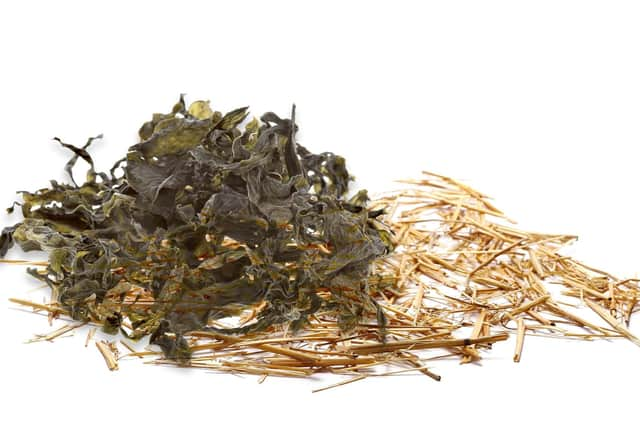BRIAN KIDD: How to get the best out of sandy soil


Sandy soil is easy to work. It warms quickly and is excellent for growing all root vegetables.
But it does dry rapidly and nutrients in the soil often drain away in heavy rain. The same applies to city soils where the ground has been cultivated for years: it becomes dark and light in texture. In fact these black soils are gradually turning to silt. Mother Nature can help. Work with her, perhaps over years, so the soil structure can be gradually improved.
Advertisement
Hide AdAdvertisement
Hide AdFor many years gardeners have used seaweed as a manure. This is what is needed to improve light soils. Seaweed is gelatinous, full of jelly. If mixed with straw it's great for improving light soils.
Here's an experiment. Imagine you're in the kitchen making jelly. Pop a cube in your mouth. As the jelly dissolves put a drinking straw in your mouth and slide it across your tongue. Now sprinkle sand on some paper, take the straw from your mouth and roll it in the sand. What happens? The sand sticks to the straw. This is what we're going to do. Adding straw and seaweed to the ground will make the sand bind to the straw and seaweed.
Start another new composting regime using just straw and seaweed, but keep composting kitchen waste in it's own bin.
The method. Take a freshly-dug area and use a compost bin, an old dustbin upside down or surround the area with boards ensuring there are no gaps between boards and no holes in the sides. If you can't do this, use a wire surround and inside peg old compost bags so as much moisture as possible is kept in the new heap.
Advertisement
Hide AdAdvertisement
Hide AdOn the soil place a layer of straw. Strawy manure is OK but the layer must only be four inches deep. Add an activator such as Garrota or sulphate of ammonia dissolved in water. This must be evenly sprinkled, not poured '“ two ounces per gallon of water or use urine, diluting one part in seven parts water.
Add a four-inch layer of any kind of seaweed. You may gather this from any public beach without being told off! Add the activator again and a four-inch layer of straw. After every layer add the activator. This is essential. After each layer cover the top immediately with old carpet or plastic bags to retain the moisture, ammonia gas and naturally-forming warmth.
Once the container is full, cover again and soak the heap with sulphate of ammonia, one gallon to each square yard surface, sprinkled slowly. Cover.
In two months you'll have one of the finest mediums for sandy soil, just like peat, and you'll be able to fork it into the soil in spring. Work it into the top inches or scatter on top because there'll be no weeds.
TIP OF THE WEEK
Advertisement
Hide AdAdvertisement
Hide AdHosta buds are now poking through and it's the time tiny slugs eat through them so in spring, as leaves unfurl, there are neat holes in the leaves.
To stop this, crush lots of eggshells, using a rolling pin to produce fine chippings, and put a generous layer round the shoots or sharp sand or sharp grit over the soil. Vermiculite will also do the trick.